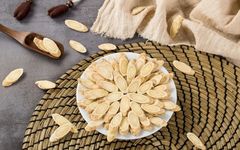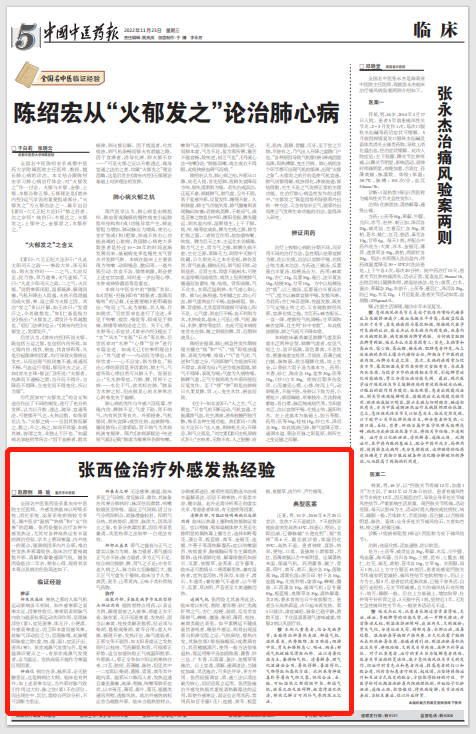
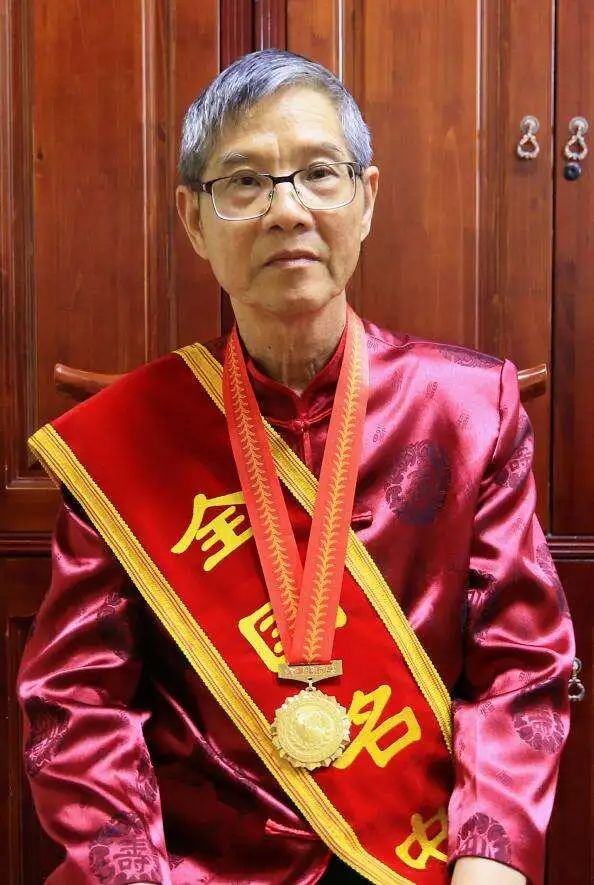
▲Zhang Xijian, National Renowned TCM Practitioner (1944.5-)
Zhang Xijian, a national renowned TCM practitioner and chief physician at Chongqing Traditional Chinese Medicine Hospital. Exogenous fever is commonly associated with diseases of the respiratory, digestive, and urinary systems, falling under the categories of “Wenbing” (Warm Diseases), “Rebing” (Heat Diseases), and broadly “Shanghan” (Cold Damage) in TCM. Zhang Xijian specializes in treating various exogenous fever syndromes, particularly with rich experience in differentiating and treating various high fever syndromes. Academically, he supports the view of the unity of cold and heat, internal and external factors, emphasizing that the etiology often involves both internal and external pathogens. Difficult-to-treat fevers are often due to pathogenic heat. Clinical treatment focuses on dispersing external pathogens, clearing heat toxins, and regulating the Qi mechanism. After following Zhang Xijian’s clinical practice for over two years, I have gained some insights, and I will summarize his academic viewpoints and treatment experiences as follows for the benefit of my colleagues.
Clinical Experience
1. Differentiation of Syndromes
Distinguishing Cold and Heat Attributes The effects of cold and heat pathogens on the movement of Qi in the body are different. For example, in the case of exogenous cold pathogen with a full exterior syndrome, the cold nature constricts, leading to a retraction of the pulse and Qi, resulting in a floating and tight pulse (Xian), with symptoms of aversion to cold, absence of sweating, and clear urination. In the case of exogenous cold with a deficiency syndrome, due to the deficiency of Wei Yang, the patient is susceptible to wind-cold, thus the pulse is floating but weak, presenting as a slow pulse (Huan), with symptoms of sweating and aversion to wind (cold). The presence of red urine or a hot nose is a key point in distinguishing between cold and heat; if there is red urine or a hot nose, it must be a heat syndrome. The degree of fever cannot be used as a distinguishing factor between cold and heat.
Distinguishing the Location of the Disease The disease is located in the exterior, and the pulse is mostly floating, indicating that there is no interior organ syndrome. This is a general guideline for distinguishing the location of the disease. However, there are exceptions in clinical practice. For instance, in the case of the aforementioned full exterior cold syndrome, when the external pathogen has a strong retraction effect on the pulse Qi, the pulse may not be floating but may appear in the middle or deep position, requiring comprehensive analysis through the four examinations to avoid misdiagnosing it as an interior syndrome.
Distinguishing Concurrent Pathogens Whether it is a cold or heat pathogen, it is common to see concurrent Wei Qi involvement in clinical practice, often presenting with a floating pulse and thirst. When the pulse is floating and tight with a slippery and rapid quality, it indicates a combination of wind-cold and lung heat, leading to severe coughing or even wheezing. In heat syndromes with concurrent Wei Qi involvement, the pulse is more slippery and vigorous. In Yangming Qi level heat, the heat is intense, with thirst and a large pulse, showing a floating and surging quality, indicating the presence of heat toxins in the exterior, thus using a method that clears both the exterior and interior is more effective than a single Bai Hu Decoction.
Distinguishing the Strength of Pathogenic and Correct Qi The strength of pathogenic Qi and the deficiency or excess of correct Qi can be distinguished by pulse strength. A strong pulse indicates that pathogenic Qi is strong but correct Qi is not deficient; a weak pulse often indicates a deficiency of correct Qi, combined with the location of the disease to differentiate between lung, spleen, and kidney Qi deficiencies. There are also elderly patients or those with chronic diseases whose pulse may seem vigorous but has a large amplitude, indicating a deficiency of correct Qi that fails to contain. Clinically, ginseng (Ren Shen), astragalus (Huang Qi), ophiopogon (Mai Dong), cornelian cherry (Shan Zhu Yu), and schisandra (Wu Wei Zi) are often used to tonify kidney Qi.
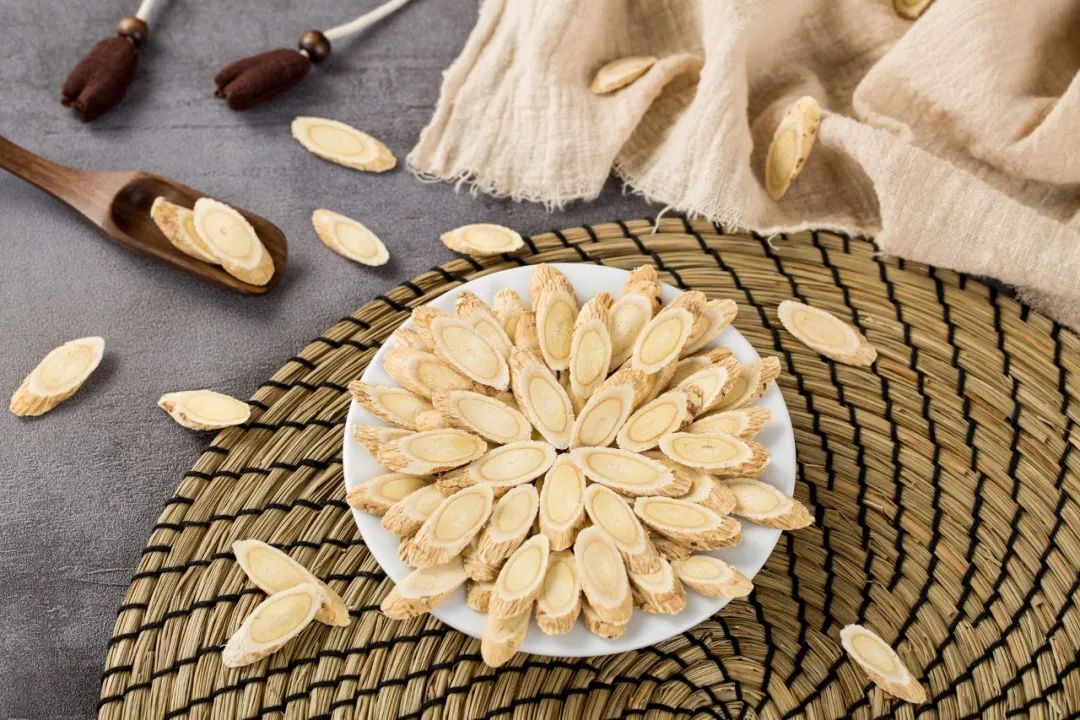
▲Astragalus (Huang Qi)
2. Treatment
Dispersing External Pathogens, Based on Seasonal and Fever Type Characteristics for Differentiation and Medication Medication should be based on the characteristics of the fever type. For example, in the case of exterior syndrome, if a person with tightly closed pores is exposed to cold, with strong pathogenic Qi and no deficiency of correct Qi, the pulse is tight and floating, with no sweating and severe aversion to cold, and mild fever, it is appropriate to use Ma Huang (Ephedra) and Gui Zhi (Cinnamon Twig) to release the exterior and disperse the pathogen, but it must be combined with Chai Hu (Bupleurum) and Ge Gen (Kudzu) or Chai Hu and Huang Qin (Scutellaria) for effectiveness. In cases of deficiency individuals with exogenous pathogens, where the pores are not tightly closed, fever with sweating, and weak pulse Qi, the struggle between correct and pathogenic Qi is not intense, such as in the case of Taiyang exterior deficiency syndrome, where fever can be treated with Gui Zhi and Shao Yao (Peony) to release the muscle and nourish the Ying Qi. Depending on the situation of pathogenic and correct Qi, it is appropriate to strengthen the correct Qi or warm Yang to disperse the pathogen. When the external pathogen gradually enters, the struggle between pathogenic and correct Qi can be seen in Shaoyang syndrome with alternating cold and heat, bitter mouth, epigastric fullness, thin and greasy tongue coating, and tight pulse. If one or two symptoms are present, use Chai Hu, Ge Gen, Qing Hao (Artemisia Annua), Huang Qin, and similar herbs to disperse externally and clear internally. If the warm pathogen enters through the mouth and nose, the fever is rapid and accompanied by nasal congestion, runny nose, sore throat, and cough, use Xin Yi Hua (Magnolia Flower), Bo He (Mint), Sang Ye (Mulberry Leaf), Ju Hua (Chrysanthemum), and Yin Qiao (Honeysuckle) to open the orifices, benefit the throat, and disperse wind-heat. Therefore, the primary treatment for exogenous febrile diseases is to disperse external pathogens. Clinically, treatment should be based on the characteristics of the fever type, distinguishing the pathway and nature of the pathogenic Qi, and selecting either cooling or warming methods for releasing the exterior, avoiding the mistake of not distinguishing between cold and heat, and blindly favoring cooling while dismissing warming. Additionally, it is necessary to analyze the relationship between pathogenic and correct Qi, considering the patient’s constitution and any underlying diseases.
Clearing and Resolving Heat Pathogens, Selecting Medication Based on Clear Symptoms and Disease Location In clinical practice, heat toxins obstructing upward and phlegm-heat obstructing the lungs are common. Symptoms such as sore throat, swollen tonsils, and even obvious pus belong to heat toxins obstructing upward, and medications such as wild chrysanthemum (Ye Ju Hua), dandelion (Pu Gong Ying), Ban Lan Gen (Isatis Root), Huang Qin, Jin Yin Hua (Honeysuckle), Lian Qiao (Forsythia), and Niu Bang Zi (Burdock Seed) are selected to clear heat and detoxify. Symptoms such as severe coughing, large amounts of phlegm, chest pain, and chest tightness belong to phlegm-heat obstructing the lungs, and medications such as Zhe Bei Mu (Fritillaria), She Gan (Belamcanda), and Jin Qiao Mai (Buckwheat) are selected to clear the lungs, transform phlegm, detoxify, and drain pus. Clinically, it is also appropriate to clear internal heat through urination, and if there is damp-heat, it is advisable to use herbs that promote dampness and drain heat, such as Ze Xie (Alisma), Che Qian Zi (Plantago Seed), and Hua Shi (Talcum). If there is also obstruction of the bowel Qi, use Niu Bang Zi, Gua Lou (Trichosanthes), and other herbs to open the bowels and drain heat.
Regulating the Qi Mechanism Zhang Xijian is particularly adept at this method, often using Zhi Qiao (Bitter Orange), Xiang Fu (Cyperus), Zi Su Gen (Perilla Stem), and Sha Ren (Amomum) to smooth the liver and stomach Qi, Xing Ren (Apricot Kernel), Jie Geng (Platycodon), Qian Hu (Peucedanum), and Gua Guo (Melon Seed) to promote lung Qi descent, and Chan Tui (Cicada Slough), Jiang Can (Silkworm), Chai Hu, Bo He, Gui Zhi, and Ma Huang to smooth the exterior and interior. If the spleen’s function is weak or if the patient is prone to overeating, they are likely to experience dampness and stagnation, leading to Qi stagnation and internal heat. The pulse may be tight and slippery (indicating low amplitude), or full and strong, with a rough and greasy tongue coating. Using general methods may not effectively reduce the fever; thus, it is necessary to use Chai Ping Decoction with Yin Chen Hao (Artemisia) and Huo Xiang (Agastache), and other herbs to treat. The above methods of dispersing, clearing, and regulating should be adjusted according to symptoms and applied flexibly, using multiple methods and formulas. Zhang Xijian emphasizes that the three methods of dispersing, clearing, and regulating should focus on the clearing method as the core, but should not be used in isolation. Zhang Xijian places great importance on the use of heat-clearing and detoxifying methods in treating exogenous fever, even in cases of exogenous cold or dampness, he still employs these herbs, commonly using Jin Yin Hua, Lian Qiao, Huang Qin, Ban Lan Gen, Yu Xing Cao (Houttuynia), Dan Zhu Ye (Lophatherum), and Lu Zhu Gen (Phyllostachys).
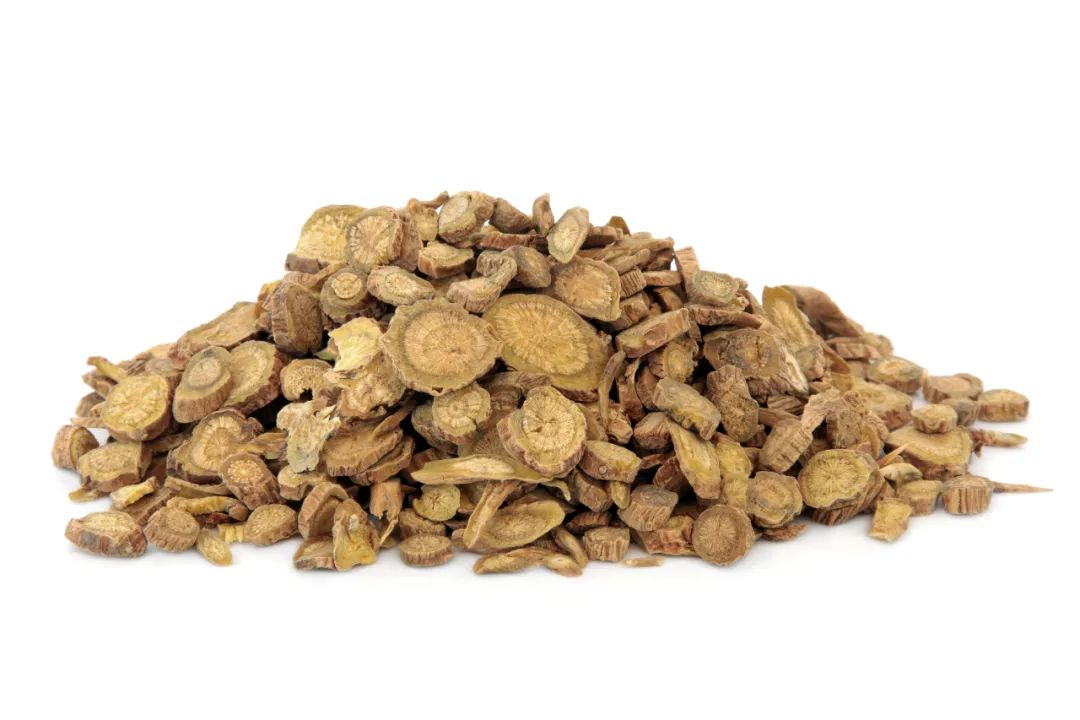
▲Huang Qin (Scutellaria)
Typical Medical Case
Wang, male, aged 10, first diagnosed on August 25, 2010. Fever for 7 days without resolution. Seven days prior, while traveling in another city, he suddenly developed a high fever of 41°C, accompanied by nausea and vomiting. He immediately returned to Chongqing and received intravenous “Cefixime” and took “Mefenamic Acid” for 6 days. By the time of consultation, his temperature was still at 39°C, with persistent high fever. The patient was fatigued, preferred to lie down, had poor appetite, constipation, and bad breath. Upon examination, the pulse was thin, slippery, and rapid, with a red tongue and thin yellow greasy coating, particularly evident in the middle of the tongue. The diagnosis was summer heat with dampness, obstructing the Qi mechanism.
Prescription: Huo Xiang (Agastache), Pei Lan (Eupatorium), Qing Hao (Artemisia Annua), He Ye (Lotus Leaf), Huang Qin (Scutellaria), Hua Shi (Talcum), and Chan Sha (Silkworm) each 10g, Yin Chen Hao (Artemisia) 15g, to clear summer heat and transform dampness; Zhe Bei Mu (Fritillaria) and She Gan (Belamcanda) each 10g, Lian Qiao (Forsythia) 30g, to transform phlegm and benefit the throat; Jiang Huang (Turmeric) 6g, Chan Tui (Cicada Slough), Jiang Can (Silkworm), and Shi Chang Pu (Acori) each 10g, to regulate the Qi mechanism; Jin Yin Hua (Honeysuckle) 50g, Ban Lan Gen (Isatis Root), and Yu Xing Cao (Houttuynia) each 30g, to clear heat and detoxify. A total of 2 doses, to be taken before midnight on the first day. The patient’s high fever subsided on the same day, and he did not experience further fever the next day. On the third day of consultation, all symptoms had improved, and the pulse had stabilized, with the slippery and rapid quality no longer evident. The dosage of herbs for clearing dampness and summer heat and regulating Qi was reduced, and 2 more doses were continued to consolidate the effect.
Note: This case involves a pediatric patient. Considering the season of onset and the characteristics of the tongue and pulse, the diagnosis was summer heat with dampness obstructing the Qi mechanism. The damp-heat was intertwined, with persistent heat and difficulty in resolution for several days; obstruction in the middle burner led to nausea and vomiting due to the stomach’s inability to harmonize and descend; Qi stagnation was indicated by the slippery and rapid pulse. The treatment focused on clearing summer heat and transforming dampness, while also regulating the Qi mechanism. The combined use of methods to clear summer heat, detoxify, and regulate Qi resulted in the resolution of summer heat, transformation of dampness, and smooth flow of Qi, leading to the resolution of high fever. Although there were symptoms of fatigue and preference for lying down, indicating damage to Qi and Yin from summer heat, the combination of symptoms, tongue, and pulse indicated that the damp-heat pathogen obstructed the middle burner and stagnated the Qi mechanism. Nourishing substances would generate dampness and hinder the spleen, thus it was necessary to wait for the dampness to transform and the heat to clear before using methods to tonify Qi and nourish Yin.
Important Statement:
Due to individual differences in constitution and disease, the prescriptions and dosages in this case are only applicable to the patient at that time. Without TCM differentiation and diagnosis, do not replicate the prescriptions and dosages in this case. Readers in need should seek treatment at a regular hospital to avoid delaying their condition. ■
【Source: China Traditional Chinese Medicine News, content excerpted from “China Traditional Chinese Medicine News” November 23, 2022, Fifth Edition, Zhao Yanli, Lu Yu, Chongqing Traditional Chinese Medicine Hospital】

